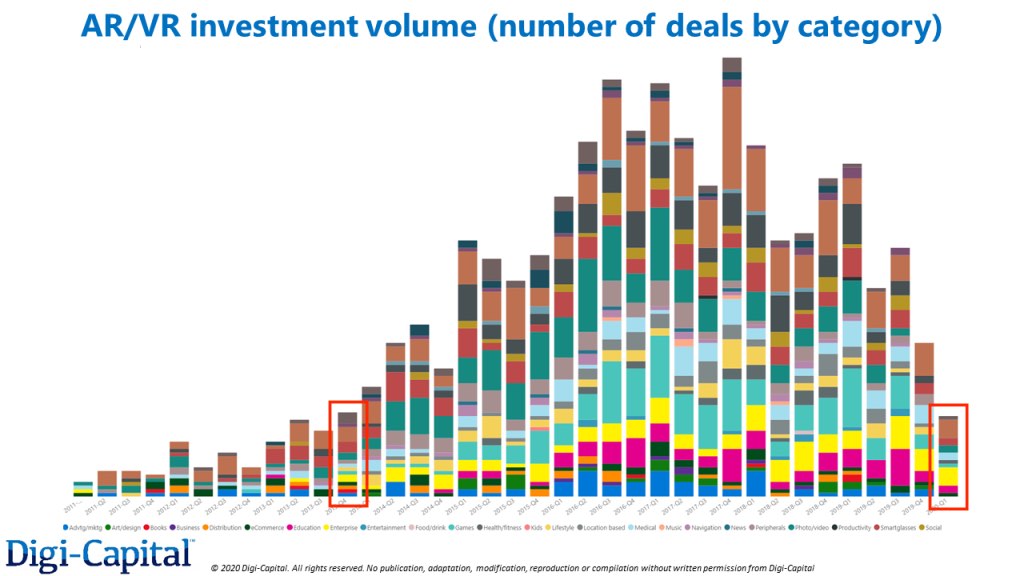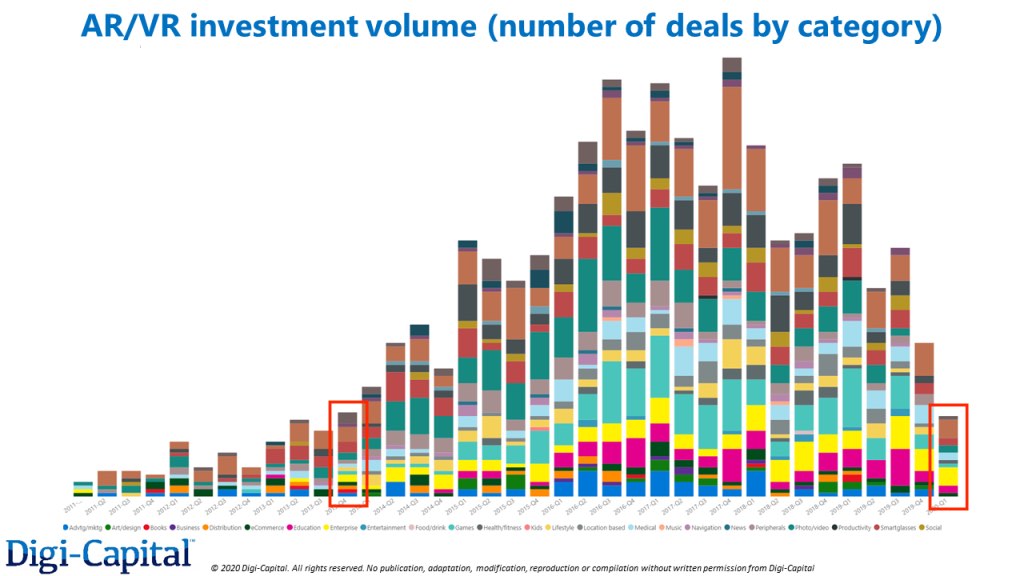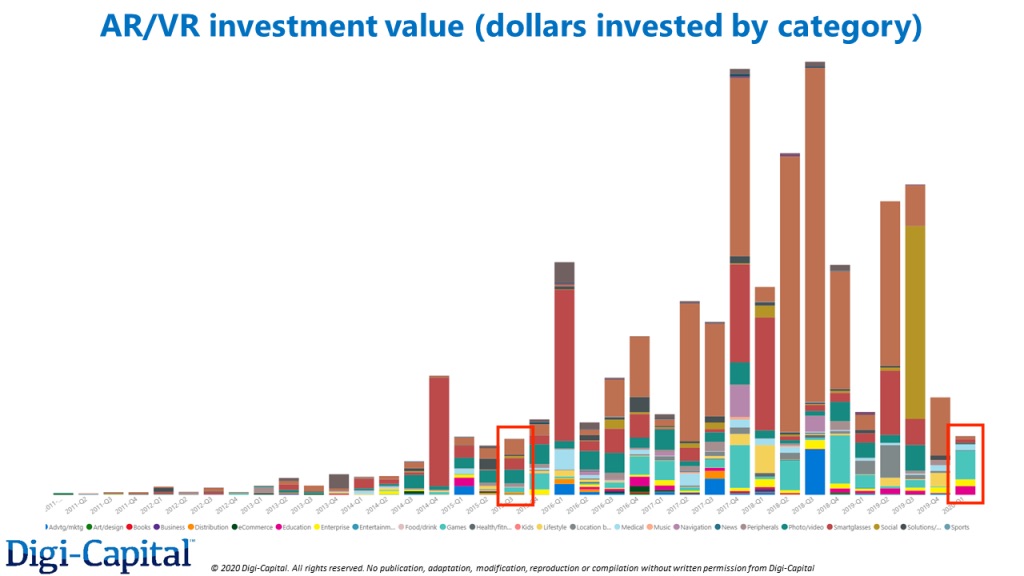Digi-Capital Report: A Continuing Downward Trend in XR Investments
The willingness to invest declines in times of adversity and the same applies when it to the XR market.
The fourth quarter of 2019 witnessed a significant decline in the investments in XR technology and the same trend is continuing in the first quarter of 2020 according to the latest Digi-Capital market analysis. The slump in investments has affected not only the number of investments but also the total capital spent on investments.
The number of XR investments in the first quarter of 2020 has declined to the Q4 2013 levels. This one of the lowest times when the industry was just on the verge breakout following Facebook’s acquisition of Oculus in the spring of 2014. This is further illustrated by the diagram below: –

The amount of risk capital has also declined over the past two quarters. In the current quarter, it has decreased to the Q3 2015 levels as is indicated in the following diagram: –

The biggest number of XR investments over the past 12 months have gone into education, games, business, medicine as well as Augmented Reality glasses. Over the same period, most of the capital was invested in Augmented Reality glasses, location-based XR entertainment games, photo and video as well as lifestyle use-cases.

Most of the investments are coming from the US, China, Israel, UK and Canada.
The diagram above has been partly distorted by the repeated large investments in Magic Leap (shown in red hue). The mixed reality company has received $2.6 billion in multiple rounds of investments since 2014. This is the largest cumulative investment ever in an XR company.
The upward swings are also due to other investments in XR technology and these have decreased considerably in the recent years.
It is not easy to explain the downward trend in XR investments over the past few quarters. Most investors are leaving the costlier expensive basic research to the big hitters such as Facebook and Apple. It could also be that many investors are no longer believe that mixed reality products will become relevant to consumers on a large scale in the near future and thus, do not justify major investments.
However, the Digi-Capital market report does not factor in the internal investments in research and development by the large players such as Facebook, Google, HTC and Apple. This could be significant as some of the large tech groups such as Facebook and Google are investing heavily, internally, in mixed reality technology. The report only captures the invested venture capital which could further distort its significance and fail to capture the complete picture of XR investments.
The Impact of the COVID-19 Crisis
The sharp dips in investments could also be attributed to the coronavirus crisis which has practically put brakes on business activity. The Digi-Capital report expects that the pandemic will cause a medium-term downward trend in XR investments. However, this will affect all startups and not just those in the XR industry.
It is not apparent whether the investments will pick up if the crisis subsides. The XR market is currently in desperate need of some new impulse to generate some momentum following a sterile and bumpy ride over the past few years. Something akin Facebook’s 2014 acquisition of Oculus could inject renewed vigor.
This year, Valve’s launch of the much-anticipated Half-Life: Alyx VR hit was expected to generate some fresh momentum and it has to some extent. However, developments in VR have been overshadowed by the crisis created by the pandemic. Still, consumer interest remains strong. Popular virtual reality headsets such as Valve Index and Oculus Quest have now been sold out for months. However, the shortages aren’t entirely due to strong demand. They have also been caused by disruptions in the supply chain in China that was caused by the COVID-19 crisis. It is still unclear to what degree coronavirus has disrupted this supply chain.
You can read the full Digi-Capital XR market analysis report here (It’s available for a fee).
https://virtualrealitytimes.com/2020/05/12/digi-capital-report-a-continuing-downward-trend-in-xr-investments/https://virtualrealitytimes.com/wp-content/uploads/2020/05/XR-Market-Analysis-600x333.jpghttps://virtualrealitytimes.com/wp-content/uploads/2020/05/XR-Market-Analysis-150x90.jpgTechnologyTechnology DiscussionThe willingness to invest declines in times of adversity and the same applies when it to the XR market. The fourth quarter of 2019 witnessed a significant decline in the investments in XR technology and the same trend is continuing in the first quarter of 2020 according to the latest...Sam OchanjiSam Ochanji[email protected]EditorVirtual Reality Times - Metaverse & VR
